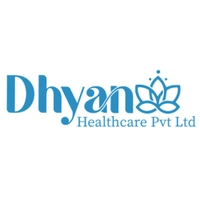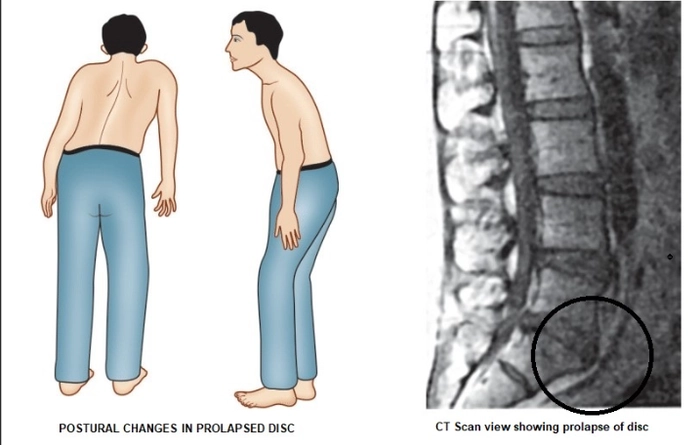Introduction
PIVD, or Prolapsed Intervertebral Disc, is a common condition that affects the spine, causing pain and discomfort. The intervertebral discs act as cushions between the vertebrae, providing support and flexibility to the spine. When a disc prolapses, or herniates, it can put pressure on nearby nerves, leading to symptoms such as pain, numbness, and weakness. At Dhyan Healthcare, we are committed to providing comprehensive care and support for individuals dealing with PIVD, ensuring optimal management and relief from symptoms.
Causes and Risk Factors
PIVD can occur due to various factors, including:
- Age: Degenerative changes in the discs commonly occur with aging, making older adults more prone to PIVD.
- Lifestyle Factors: Activities that involve repetitive bending, lifting, or twisting can increase the risk of disc herniation.
- Obesity: Excess weight puts additional stress on the spine, increasing the risk of disc prolapse.
- Genetics: Some individuals may have a genetic predisposition to developing PIVD.
- Trauma: Injuries such as falls or accidents can damage the intervertebral discs, leading to herniation.
Symptoms
Common symptoms of PIVD include:
- Back Pain: Typically localized to the affected area of the spine.
- Radiating Pain: Pain may radiate to the buttocks, thighs, or legs, depending on the location of the affected disc.
- Numbness and Tingling: In the legs or feet, often following the path of the affected nerve.
- Muscle Weakness: Weakness or difficulty in moving the legs or feet.
- Changes in Reflexes: Reduced or exaggerated reflexes in the affected area.
Diagnosis
Diagnosing PIVD involves:
- Medical History and Physical Examination: Your healthcare provider will ask about your symptoms and perform a physical examination to assess your spine's range of motion, strength, and sensation.
- Imaging Studies: X-rays, MRI, or CT scans may be ordered to visualize the spine and identify any herniated discs or other abnormalities.
Treatment Options
The treatment for PIVD aims to relieve symptoms, reduce inflammation, and promote healing. Treatment options include:
-
Conservative Management:
- Rest: Avoiding activities that aggravate symptoms and allowing the spine to heal.
- Pain Medication: Over-the-counter or prescription medications to relieve pain and inflammation, such as nonsteroidal anti-inflammatory drugs (NSAIDs) or muscle relaxants.
- Physical Therapy: Exercises to strengthen the muscles supporting the spine, improve flexibility, and reduce pressure on the affected discs.
- Heat and Cold Therapy: Applying heat or cold packs to the affected area to reduce pain and inflammation.
-
Minimally Invasive Procedures:
- Epidural Steroid Injections: Injection of corticosteroids into the epidural space around the spinal cord to reduce inflammation and alleviate pain.
- Nerve Root Block: Injection of local anesthetic and corticosteroids around the affected nerve root to relieve pain and inflammation.
-
Surgical Intervention:
- Discectomy: Surgical removal of the herniated portion of the intervertebral disc to relieve pressure on the nerves.
- Laminectomy: Removal of a portion of the vertebral bone (lamina) to decompress the spinal cord or nerve roots.
- Spinal Fusion: Fusion of adjacent vertebrae to stabilize the spine and prevent further disc herniation.
Post-treatment Care and Rehabilitation
Following treatment for PIVD, rehabilitation may include:
- Gradual Return to Activity: Gradually resuming normal activities and exercises under the guidance of a healthcare provider or physical therapist.
- Core Strengthening: Engaging in exercises to strengthen the core muscles to provide stability and support to the spine.
- Maintaining Good Posture: Practicing good posture habits to reduce strain on the spine and prevent future injuries.
- Regular Follow-up: Monitoring symptoms and progress, and making any necessary adjustments to the treatment plan.
Lifestyle Modifications
Making certain lifestyle changes can help manage PIVD and prevent recurrence:
- Maintaining a Healthy Weight: Following a balanced diet and regular exercise regimen to reduce excess weight and pressure on the spine.
- Proper Lifting Techniques: Using proper lifting techniques and avoiding heavy lifting whenever possible to prevent strain on the spine.
- Regular Exercise: Engaging in low-impact exercises such as walking, swimming, or yoga to improve flexibility, strength, and overall spinal health.
- Ergonomic Modifications: Making ergonomic adjustments to workstations and seating arrangements to maintain proper spinal alignment and reduce strain.
Conclusion
PIVD, or Prolapsed Intervertebral Disc, can cause significant pain and discomfort, impacting daily activities and quality of life. At Dhyan Healthcare, we understand the challenges associated with PIVD and are committed to providing comprehensive care and support to individuals dealing with this condition. Through a combination of conservative management, minimally invasive procedures, and surgical intervention when necessary, we strive to alleviate symptoms and improve overall spinal health.
For more information or to schedule a consultation, please visit our website or contact our clinic. Our team of experienced healthcare professionals is here to help you find relief from PIVD and regain function and mobility in your daily life.


